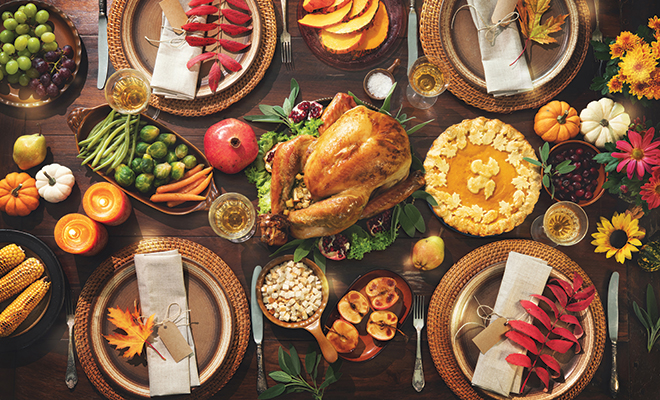
The Scent of Home
What is your favorite family holiday? Mine is Thanksgiving, hands down. I can still walk down memory lane to those chilly mornings when we kids would sit around the family room in sweatpants watching the Macy’s Thanksgiving Day Parade. The smell of turkey and yeasty rolls would always waft in from the kitchen, where Mom was busy cooking.
I experienced the most intense mingling of smells when we all sat down, hungry and eager to try the dishes arrayed across the big mahogany table, but first we had to watch Dad carve the steaming bird. We had an unusual family tradition: after we gorged ourselves on mashed potatoes, stuffing, gravy, cranberry sauce, green beans and all the other holiday delights, we would go take a walk in the frosty woods to make some room in our bellies before coming home to indulge in pumpkin pie. As kids, we always wanted to have dessert right away, so there was a small consolation to tide us over through the nature walk; we were each allowed to have one Andes Mint after the meal. I would savor mine as long as I could, slowly melting the chocolate and mint together in my mouth. To this day, the taste of chocolate and mint takes me back to those family gatherings.
Food can be deeply tied to our memories. Why is it that a taste can be so strongly nostalgic? The answer lies in our senses. The olfactory senses, smell and taste, are hard-wired to areas of our brains that are responsible for learning and memories in ways that other senses are not. The part of the brain that deals with smells, the primary olfactory cortex, contains the amygdala, which turns stimuli into emotional responses and learns from them, and the hippocampus, which stores long-term memories. In other words, when we eat something with a distinctive flavor that also evokes an emotional response, our body stores that information as a long-term memory that will bring up the same emotion when we encounter that smell or taste in the future.
Studies have found that odor-evoked memories “evoke more emotional and evocative recollections than memories triggered by any other cue.” The same research found that a taste or smell can transport us back not only to the specific food we ate, but also to the situation we were in when we consumed it, because our brains record all the stimuli present in the memory, just like an Andes Mint reminds me of family, crisp mornings, walks in the woods and the happy, groggy feeling of being satiated with turkey. That’s why foods we associate with positive feelings can trigger such a detailed recollection. Food memories often contain elements of relationship, because we eat with people we love, and ritual, such as the family holiday traditions in which we find security and a sense of home, so they get deeply embedded into our brains as autobiographical memories, a type of long-term memory that stores events of our own lives. Olfactory memories are also more often associated with early childhood than visual or auditory memories.
The very good news about this phenomenon is that we can use food memories to enhance our current wellbeing. When we smell a familiar food and allow ourselves to be transported back to the scenario surrounding it, if that memory is positive for us, our bodies actually undergo changes that make us feel calm and happy. We start to breathe more deeply and slowly, and our anxiety levels decrease. Some people find themselves “stress baking” to ease their anxiety with familiar tastes and smells such as bread or cookies. However, we might not need to overeat in order to reap the benefits of our food memories. One study suggests that we could get as much emotional benefit from sniffing the food we love as from actually eating it. This might take more discipline than most of us have, though; good luck smelling those homemade chocolate chip cookies you just baked without taking a bite!
It might seem counterintuitive, but another way food memories are useful is to stop cravings. This especially applies to cravings for substances such as cigarettes or alcohol, possibly because the odor-evoked memories can give us the same sense of calm as those substances would have. Researchers have also found that we can use smells to decrease cravings for calorie-dense foods, but they aren’t sure whether that works by distracting us from the temptation at hand or by using food memories to remind us of times we felt full and satisfied. In either case, the message is clear: food memories run deep, and they can be a very useful way to take us to a happier place. ■
Sources: ncbi.nlm.nih.gov, wikipedia.org and healthline.com.







